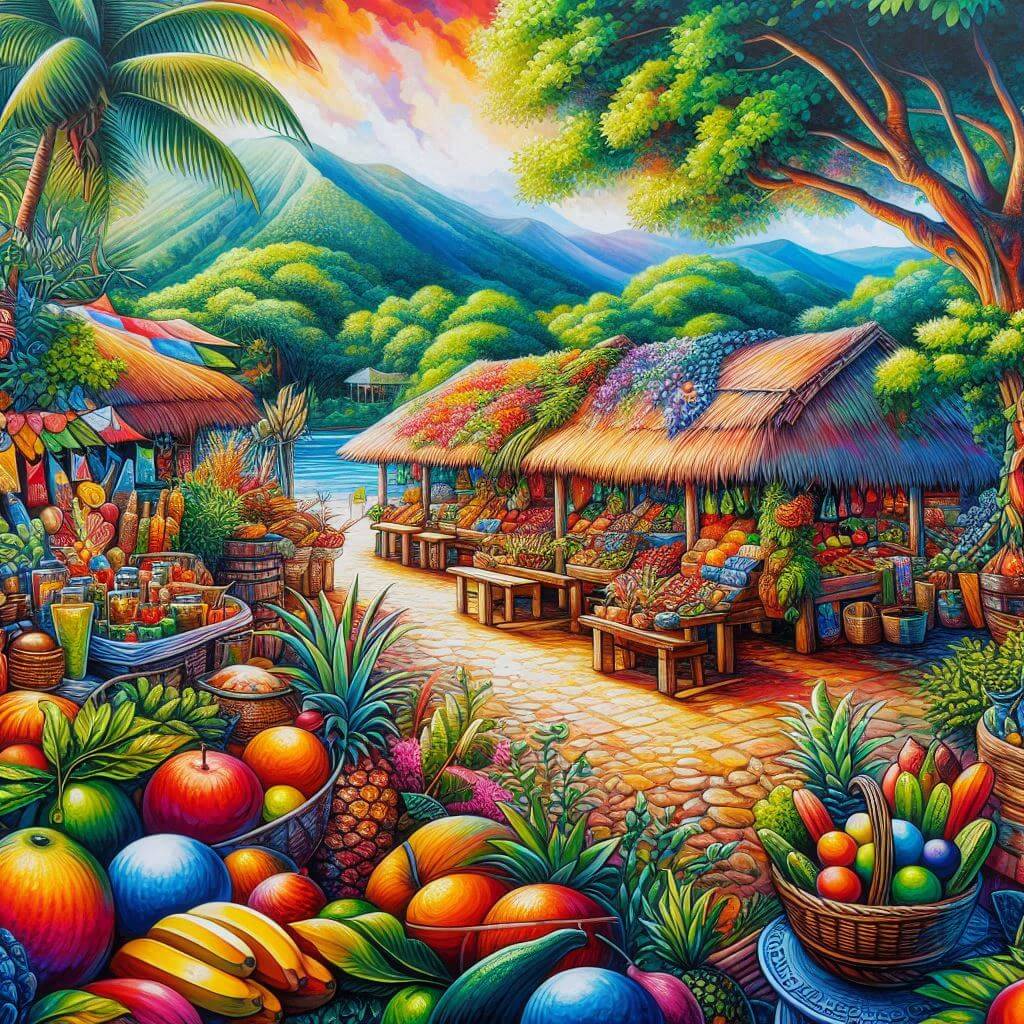The flag of Dominica is one of the most distinctive and symbolically rich national flags in the world. It features a green field with a centered cross of three equal bands - yellow (top and bottom), black, and white. At the center of the cross is a red disc bearing a purple Sisserou Parrot encircled by ten green five-pointed stars. This complex design encapsulates Dominica's natural beauty, cultural heritage, and national aspirations.
Dominica information
| National Flag Day | November 3 |
| Sovereign state | Yes |
| Official name | Commonwealth of Dominica |
| Capital | Roseau |
| Population | 71,625 |
| Area | 751 km² |
| Currency | Eastern Caribbean dollar (XCD) |
| Language | English |
| Continent | North America |
| Region | Caribbean |
| Subregion | Lesser Antilles |
| Borders | France (Marie-Galante and Guadeloupe) |
| Timezone | Astern Standard Time (AST) UTC-4 |
| Calling code | +1 767 |
| Top-level domain | .dm |
History of the Dominica Flag
 The current flag of Dominica was officially adopted on November 3, 1978, coinciding with the country's independence from the United Kingdom. However, the process of creating this unique design began earlier:
The current flag of Dominica was officially adopted on November 3, 1978, coinciding with the country's independence from the United Kingdom. However, the process of creating this unique design began earlier:
- 1967: Dominica became an associated state of the UK, using a blue ensign with the coat of arms of Dominica.
- 1977: A national flag competition was held in preparation for independence.
- 1978: The winning design by playwright Alwin Bully was selected and officially adopted upon independence.
Symbolism and Design of the Dominica Flag
Every element of Dominica's flag is laden with symbolism:
- Green field: Represents the lush vegetation of the island, often called "The Nature Island of the Caribbean."
- Cross: Symbolizes Christianity, the predominant religion in Dominica.
- Yellow bands: Represent sunshine and the main agricultural products (bananas and citrus).
- Black band: Represents the rich, fertile soil and the African heritage of most Dominicans.
- White band: Symbolizes the pure water of Dominica's rivers and waterfalls, as well as the purity of aspirations of its people.
- Red disc: Represents social justice.
- Purple Sisserou Parrot: An endemic species found only in Dominica, symbolizing flight toward greater heights and fulfillment of aspiration.
- Ten green stars: Represent the ten parishes of Dominica, arranged in a circle to signify unity.
Usage and Significance of the Dominica Flag
 The flag of Dominica is a source of great national pride and is widely used throughout the country. It is flown on government buildings, schools, and during national celebrations such as Independence Day on November 3. The flag plays a crucial role in state ceremonies and is often prominently displayed during international events where Dominica is represented.
The flag of Dominica is a source of great national pride and is widely used throughout the country. It is flown on government buildings, schools, and during national celebrations such as Independence Day on November 3. The flag plays a crucial role in state ceremonies and is often prominently displayed during international events where Dominica is represented.
In everyday life, the flag serves as a powerful reminder of Dominica's unique identity, natural beauty, and cultural heritage. It's not uncommon to see the flag incorporated into various forms of art, clothing, and cultural expressions across the island.
Interesting Facts About the Dominica Flag
- Dominica is the only nation in the world to feature the color purple prominently on its flag.
- The Sisserou Parrot (Amazona imperialis) on the flag is also known as the Imperial Amazon and is Dominica's national bird.
- The flag's designer, Alwin Bully, is a renowned playwright and cultural icon in Dominica.
- The complex design of the flag makes it one of the most expensive national flags to produce.
- Despite its complexity, the flag has remained unchanged since independence, reflecting its strong acceptance and significance to the Dominican people.